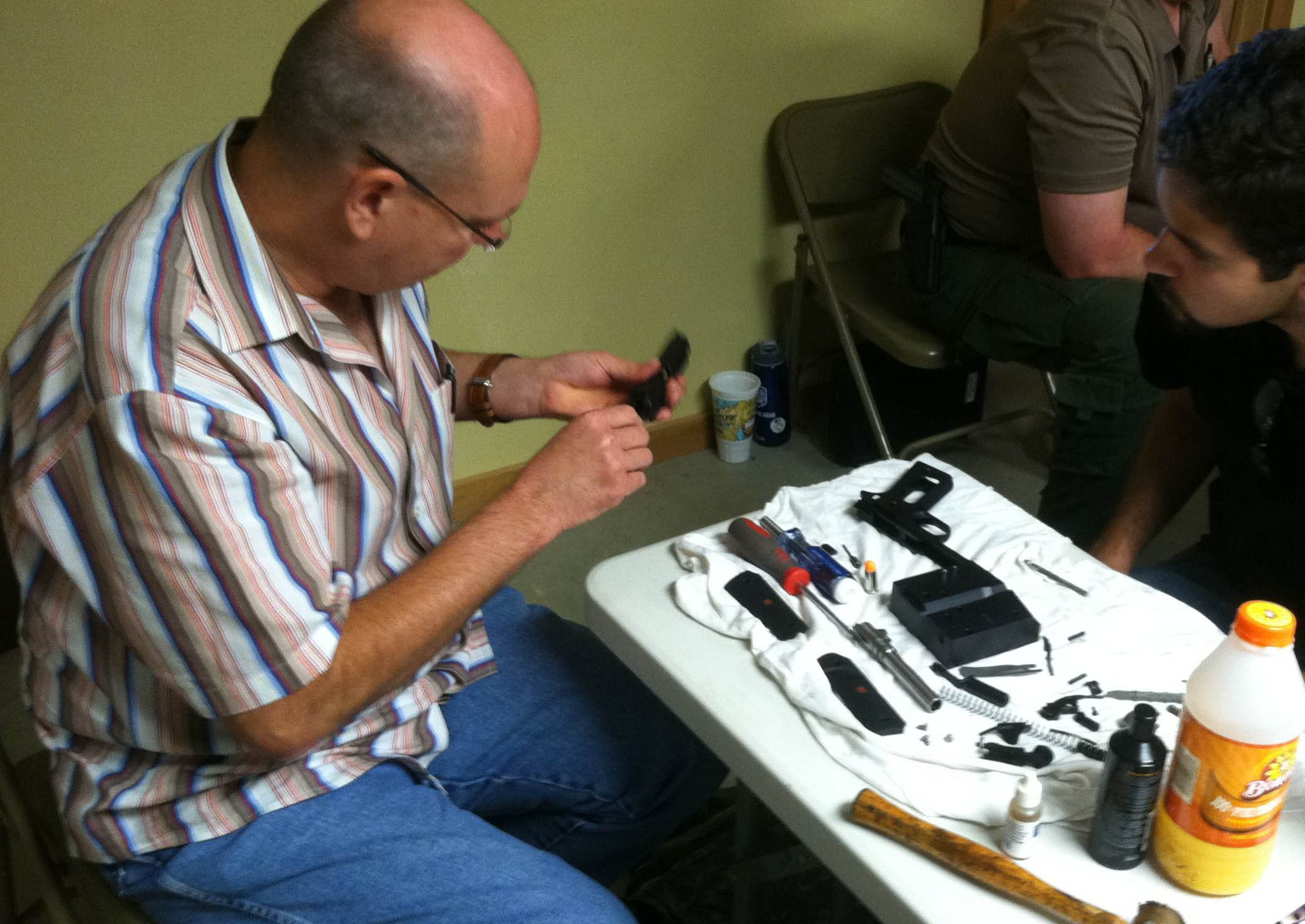
10-8’s good buddy William showing a student the finer points of a 1911 at a 10-8 1911 Diagnostics and Operations Course in Austin, TX.
Often times I hear phrases similar to, “When I get done with this class I am going to build the most bitchin’ (fill your favorite iteration of a black rifle/carbine). But teaching you how to “build” this weapon is not what most basic armorer courses are about. Rather than teach how to build a weapon from the ground up most manufacturer armorer courses send you away with the basic knowledge of how to keep your department or agency weapons up and running and in good serviceable condition.
Having attended manufacturer armorer courses and later began teaching them myself, I have learned that one should realistically expect to take away a solid foundation and intricate knowledge of the working weapon system, manufacturing process, diagnostic issues and finally how to properly repair basic to moderate weapon issues. Major repairs should be diagnosed, addressed, and unless properly trained with access to the correct tools, a call to the factory or to the instructor should be made to consult the pros.
Most people who enroll in an armorer course should have at least a basic working knowledge of the weapon before training day one. Not only will this help the flow of the class, but also those in attendance stand to gain a lot more from a class that is not waiting for “that guy” who is on the other end of the bell curve. Seeing working weapons in firearm classes and training, diagnosing malfunctions when they occur and knowing what parts commonly break will greatly increase your knowledge and understanding of the weapon when the instructor talks about these points.
Parts found on our weapons are not easily located at your local Home Depot and neither are the tools used to service the platform. Learning about these parts and how to use the tools properly should be taken away and tucked into the memory bank we all have. Often times your instructor will show you different tools and perhaps many different ways to fix, repair, remove or upgrade the weapon system you are learning about in class.
While attending class take the time to talk with the other students. I know, we (generally weary of breaking down barriers) are not the greatest at this, but believe me; many in these classes have a wealth of knowledge about weapons and are eager to share their experiences. Bring along some type of storage device as you are likely have access to instructor notes, presentations, photos or just some random tidbit of information that you can take back to your agency and share with your troops.
The basic armorer class will likely be just that, basic. With the right amount of knowledge prior to day one, some folks with good stories and experiences, and a good instructor; one can take the lessons learned and start to build a solid foundation for a particular weapon system.


